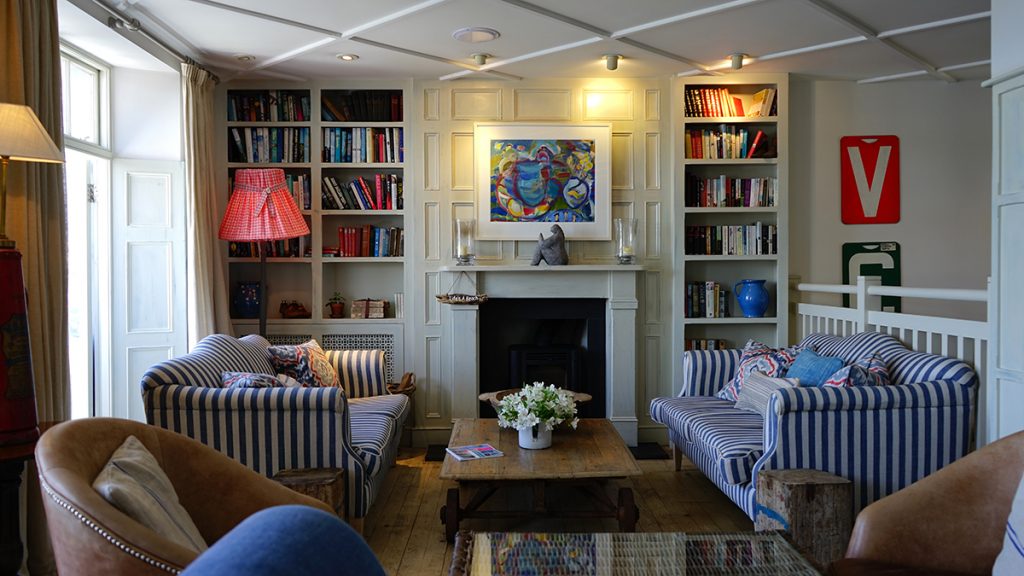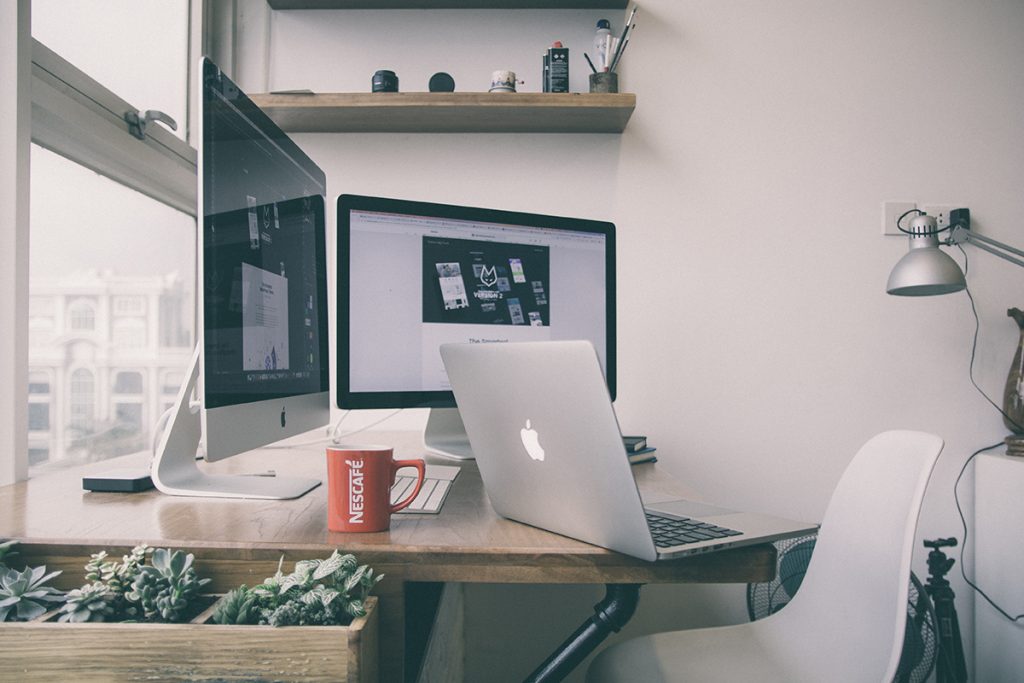
For many of us now, working from home has gone from an occasional accommodation or reward to an outright necessity. There are statistical advantages to working remotely, and avenues for business owners to manage their employees and maintain productivity, but the line between home life and work life is blurrier than ever.
As “going to work” has become nothing more than opening my nearby laptop, I have struggled to keep up with routines and separate work and home. Some of this is steeped in challenges outside the scope of this article or my immediate ability, including baseline stress levels that are probably not good for my blood pressure. I can no more help your baseline stress levels than I can my own.
I can, however, offer a few tips in drawing a more distinct line between your personal life and your work life. Years prior to our current predicament, I took up actual drawing. I wanted to illustrate. There are all kinds of challenges in taking up a new hobby (a hobby that, for me, eventually became a side gig and not dissimilar from work in a broad sense), not the least of which is where?
To best do work, you need a place, both literal and physical, as well as figurative and abstract. A mechanic needs a garage, a carpenter needs a workshop, an artist needs a studio. My initial foray into illustrating had two separate components: my art supplies, which were stored in boxes in my bedroom, and my desk, which was a general all-purpose area for anything that required sitting and also a flat surface. Learning and practicing took forever during this period because I hated the amount of time it took to get set up, put things away and I never felt “in the zone” surrounded by various unrelated household sundry. I’m ashamed to admit that it took me way too long to think to combine the two into a specific space to do art.
There is a Japanese concept called ikigai, which literally means “reason for being.” Less succinctly, it is composed of a nebula of concepts about living a healthy, well-intended, mindful life. It is believed to be one of the reasons why residents of Okinawa, Japan live such long and happy lives.
Part of ikigai is meaningful, enjoyable work, and part of doing that work is entering a state of “flow.” Flow, as defined by psychologist Mihaly Csikszentmihalyi, is “the state in which people are so involved with an activity that nothing else seems to matter.” Can you really expect to enter flow while hunched over the dining room table, surrounded by yesterday’s mail and nudging the pepper shaker for room?
Carve Out Your Work Space
Making space to work is going to present different challenges for different people. The size of your home, the people you live with, whether you have kids –these will affect where and how you can make space for yourself. Only the most extreme outliers will be unable to do this at all; everyone else should be able to at least attempt to for the sake of their productivity.
When I began drawing, I lived in a one bedroom apartment I shared with my girlfriend (who is now my wife). My challenges were not those of separating myself from other living beings: we don’t have a giant dog or children, so this was a bit easier for me. No, my challenge was finding actual, physical space. Square footage. It’s at a premium in an apartment. I managed to wedge a desk at the edge of the living room, next to the couch and nearly hanging out over into the hallway. The chair, when in use and not stowed under the desk, had to be parked in the middle of the walkway into the living room.
Which is to say that it was cramped, not ideal and overall, kind of a pain. But I made it work. And making that physical space was an important first step. I cannot overstate the value of finding a spot in your home, however small, and using the space almost exclusively for the work you intend to do. You’ll soon find yourself in the routine of being in “work mode” in this space, especially in lieu of going to actual workplace away from your home.

Personalize Your Space
Early on, I made the mistake of laying out my drawing space with cold efficiency. iMac, watercolor palette, end of list. I had made a spot for myself to do work, thinking only work was important for this space. My desk was a sterile, boring slate. This bred neither creativity nor comfort. I needed now to make the space not just a space, but my space.
I find personalizing any space a precarious balance: too many trinkets and I’ve created a gaudy distracting circus for myself. Too few and the lack of warmth makes the space uninviting and, maybe only subconsciously, not a space I want to spend time in. And we’re talking about work here. If you must spend time in this space, shouldn’t it be a place you WANT to be in?
I like plants, so I have bit of ivy on my desk. I like Japan, so I keep a charm I got from Meiji Shrine in Tokyo under my iMac. A photobooth strip of my wife and I. A small wooden boat from Norway. A few rune stones from Salem, Massachusetts. Good memories. Things that remind me of the value and purpose of the work I do in this space.
Minimize Distractions
Like carving out space, minimizing distractions is going to be harder for some folks than others. Shooing away adults should be, at least in theory, somewhat easy. Shoo away adults. I am not a parent and I am all too keenly aware of overstepping my bounds by offering advice here, but I was a kid once and I know kids respond well to bribery. My experience with dogs is that they can often be quite needy, and while I don’t have dogs, I do have highly affectionate, sociable cats. They are VERY happy that my wife and I are home all the time now, but unless they intend on sleeping quietly next to me, they have to go. The same goes for dogs, ferrets, parakeets or any other lovely creature you cohabitate with. Just remind yourself that productive people bring home pet food. You have to work.

When personalizing your space, it’s worth keeping distractions in mind. Too many little Funko Pop figures, electronic devices, toys or things with moving parts, and you may find yourself overstimulated or tempted to play around with the stuff on your desk. Tread with caution when it comes to the things you surround yourself with. Even my iMac is just a really expensive way to look up reference photos for drawing and to store PDFs of my sewage bills. I’m not going to get very much drawing done if I’m toggling between social media platforms, messaging my friends and watching prank videos on YouTube.
Generally, you should reduce the number of notifications on your phone no matter where you work and, if possible, silence it completely. The only notifications my phone displays are text messages and emails. I’ve completely turned off notifications from anything else that begs to nag me throughout the day. Everything on your phone wants your attention for “engagement,” and it’s in your best interest to not even allow these notifications in the first place. My phone’s sound is always completely off, although I do wear an Apple Watch that will tap my wrist if I’m getting a call.
The practicality of disabling alerts and turning off sounds will vary from person to person, job to job, circumstance to circumstance, but these kinds of distractions are the enemy of productivity and flow. Make time to figure out what you can turn off, and then turn it off.
And finally, if you live with other people and you’re going to be working from home for a length of time (and you very well might be), invest in some decent headphones. Something that sits comfortably on or over your ear for long periods, maybe noise canceling or closed-back to tune out outside noises. It will be money well spent in the long run. Don’t listen to podcasts or audiobooks or music you don’t know. Your brain will consider things like these novelties and will try to shift your attention from your work to what it finds novel. Pay for Spotify. Build an amazing playlist of all your favorite songs. Stack it high with bangers. Hit shuffle. Music you know and makes you feel good, played at a medium volume, is best for productivity and focus.
To take illustrating from something I wanted to learn, to something I enjoyed doing, to something people would pay me for took a lot of time and a lot of effort. The space I draw in was tremendously instrumental in making this happen. Once I figured it out, I can say that it unequivocally made all the difference. So much so that now that I work from home for my primary day job, I don’t do that work at the same desk that I also do art. This would be a sacrilegious act of contamination now! It would undo everything I’ve done to build that space! I’ve actually had to reteach myself these tips to make a second space for my “real” work. And if I can make two, I am sure you can make one.
Good luck.



